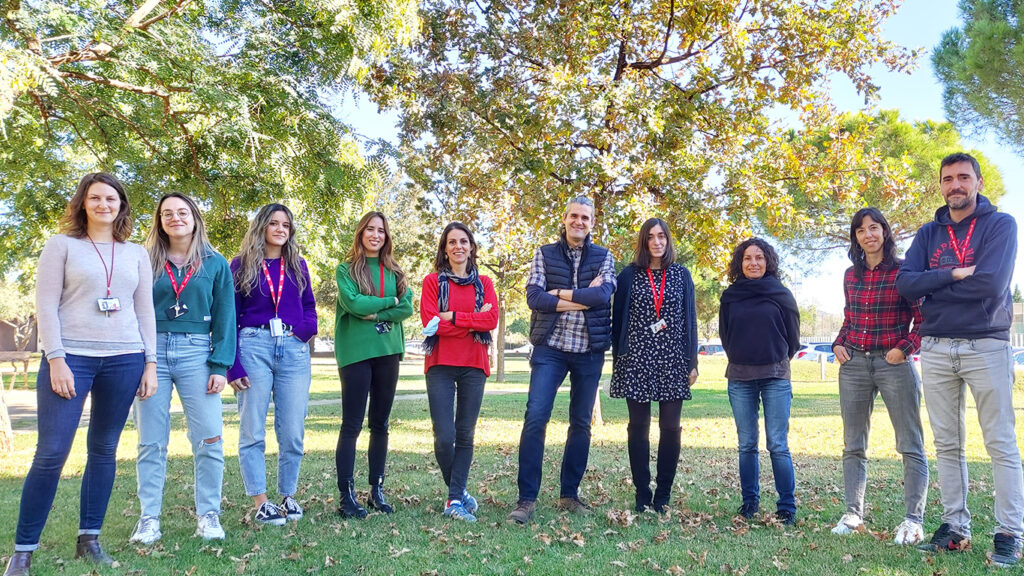Researchers from the Bellvitge Biomedical Research Institute (IDIBELL), the Girona Biomedical Research Institute (IDIBGI), and the Faculty of Medicine and Health Sciences of the University of Barcelona (UB) have discovered a new mechanism involved in the development of obesity. The work describes that the reduction of the expression of a group of microRNAs, small molecules that regulate the expression of specific genes, causes an increase in the expression of the gamma synuclein gene (SNCG) that promotes the expansion of the deposits of fat.
In the work published in the journal Advanced Science, it is shown that mice that do not express the group of microRNAs show great expansion of fat tissue, as shown by magnetic resonance studies and a careful phenotypic characterization in male and female mice. In humans, the authors indicate that those with obesity have a lower expression of microRNAs, a decrease that is reversed when the same individuals lose weight.
“This reversal in the expression of microRNA indicates that it is a dynamic and reversible pathway, therefore, we could learn to modulate it as a new treatment pathway against obesity,” says de la Dra. Ruth Rodríguez-Barrueco, principal investigator at IDIBELL and the University of Barcelona and first author of the work.
Expanding the knowledge of the role of adipocytes in obesity
Adipocytes are highly specialized cells that store energy in the form of lipid droplets. People with obesity have a greater number of adipocytes in their fat stores, a number that is defined before reaching adulthood. Poor management of these fat stores can lead to weight gain and the complications typically associated with obesity. In this sense, the increase in fat tissue observed during this research is due both to the increase in the number and to the enlargement of adipocytes. The study led by IDIBGI and IDIBELL deepens our knowledge of this field and shows that this group of microRNAs, called miR-424 (322) / 503, functions as a control system for the disproportionate accumulation of body fat.
“This study represents a decisive step towards the characterization of these microRNAs and all that they can offer as diagnostic criteria and therapeutic targets”, says Dr. Francisco José Ortega, principal investigator of the IDIBGI and the CIBER of the physiology Physiopathology of Obesity and Nutrition (CIBEROBN).
Tumor suppressor microRNAs also found as obesity suppressors
Until now, Dr. Ruth Rodríguez-Barrueco and Dr. David Llobet-Navas, principal investigator at IDIBELL and the Oncology Network Research Center (CIBERONC), had focused their studies on the miR-424 (322) / 503 group in its ability to inhibit tumor growth in breast cancer.
“In this study, we have seen that in one hand this group of microRNAs was regulating the expression of the oncogene SNCG. And in the other hand, we discovered their relationship with obesity. This coincidence points to a potential connection between obesity and breast cancer incidence”, says Dr. David Llobet-Navas, corresponding author of the study.
This work, funded by the TV3 Marathon Foundation in 2015, has been the result of close collaboration between two research centers: IDIBELL and IDIBGI, led by Dr. Francisco José Ortega, principal investigator at IDIBGI, which is the institute that has coordinated this project. Furthermore, it is a study in which two core programs of the Center for Online Biomedical Research (CIBER) join forces to achieve a common milestone: CIBERONC and CIBEROBN.
The Bellvitge Biomedical Research Institute (IDIBELL) is a biomedical research center created in 2004. It is participated by the Bellvitge University Hospital and the Viladecans Hospital of the Catalan Institute of Health, the Catalan Institute of Oncology, the University of Barcelona and the City Council of L’Hospitalet de Llobregat.
IDIBELL is a member of the Campus of International Excellence of the University of Barcelona HUBc and is part of the CERCA institution of the Generalitat de Catalunya. In 2009 it became one of the first five Spanish research centers accredited as a health research institute by the Carlos III Health Institute. In addition, it is part of the “HR Excellence in Research” program of the European Union and is a member of EATRIS and REGIC. Since 2018, IDIBELL has been an Accredited Center of the AECC Scientific Foundation (FCAECC).

